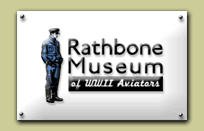 |
|
|
 |
|
 |
 |
 |
|
 |
 |
 |
|
|
|
 |
|
|
1st Lieutenant K. Bartman USAAF, 9th AF and RAAF |
|
|
|
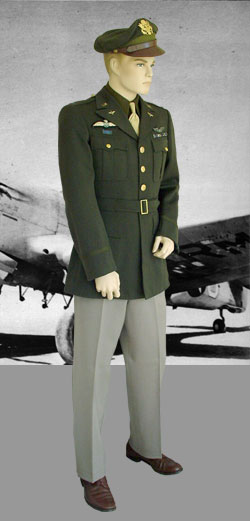 |
|
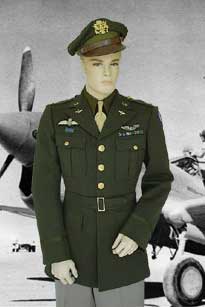 |
|
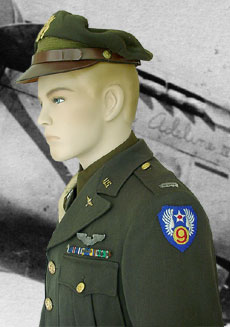 |
|
| During WWII, the US Air Force was a part of the regular Army and such wore the same olive drab and khaki pants required. The olive drab could either appear green or brown and the pants had a slight rose tint and thus were popularly known as "Pinks and Greens". Standard items for all army personnel included the US and branch of service devices on collar, awards over pockets and unit patch worn on left sleeve. Air Force qualification badges or "wings" were worn over the left pocket. Cap and button devices were the Eagle emblem of the US government. |
|
|
|
This uniform is named to Lt. K. Bartman. I don't have his record but his uniform is an interesting story. If you know anything about him, please email me! He served in the Ninth Air Force which could mean he served in N. Africa or England. He wears the wings of the RAAF which means he served with or was important to Australians. And his insignia were designed to be taken off for washing which usually means you are not near modern laundries. |
|
|
|
|
|
The cap worn by the US Army Air Force was the same as that for all Army Officers with one notable exception. Air Force officers were allowed to remove the devices which made it round and stiff as a necessity to wearing headphones while flying. While this was regulation, almost all air force personnel, flying or not formed their caps into the familiar "50 mission" crush as sign of esprit de corps. |
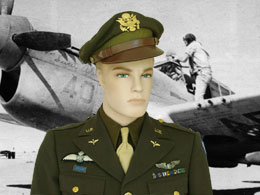 |
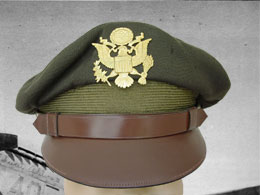 |
|
|
|
|
|
|
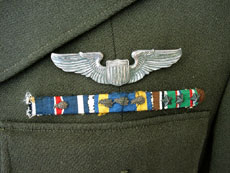 |
|
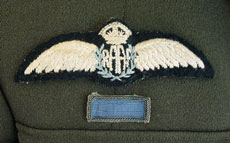 |
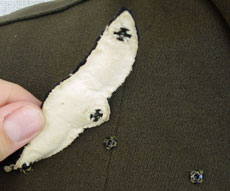 |
|
|
|
K. Bartman wears a beautiful hand made RAAF wing on the right breast which meant he either served with or was honorably awarded the wing by the other service. This had to be authorized to wear on the US uniform. The ribbon below is an interesting theater made Distinguished Unit Citation which would have been awarded by the President to the whole Squadron or Group. |
|
|
| K. Bartman wears the standard US Pilot wing, die struck out of sterling silver. The ribbons beneath denote a very active pilot with a Distinguised Flying Cross with Oak Leaf (subsequent award), Air Medal and three Oak Leafs and the ETO theater ribbon with three battle stars. They are sewn onto a piece of metal which is sewn directly to the uniform. |
|
|
|
|
Note the linen lining on the back, a sign of hand tailored. The wing is mounted on pop-studs which is very common on uniforms worn in the tropics. This was to avoid damaging insignia during less than normal washing conditions. |
|
|
| *Click on any picture to see full size. |
|
|
|
|
|
|
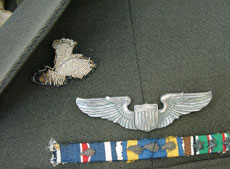 |
|
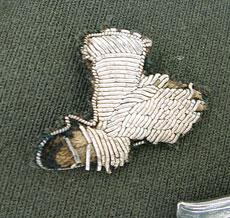 |
|
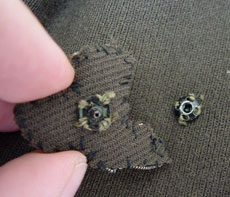 |
|
| Under the collar we find something really special. A hand-emroidered "Late Arrivals Club" award. This was given by the squadron to those who qualified by getting shot down behind enemy lines and then walked back to the station. This was common in N. Arfrica. If you were dumped in water and returned, you would be part of the "Flying Goldfish Club". |
|
|
| The "Winged Boot" award also features its own pop-stud attachment. Notice that the award is backed with the same material as the tunic. |
|
|
| Since the "Late Arrivals Club" or "Winged Boot" was not an authorized award, it had to be worn hidden under the collar. The device is made up of silver cord with interior thread called bullion. |
|
|
|
|
|
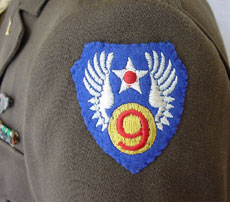 |
|
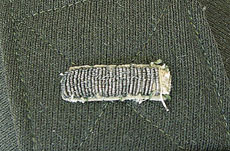 |
|
|
|
The Ninth Air Force insignia on left is a nice example of felt patches usually made abroad (typically England). They were embroidered by hand and had a more elegant look than machine embroidered examples from the states. |
|
|
| K. Bartman's First Lieutenant bars are hand made and of the same manufacture as the "Winged Boot" above. Again, the work of a local tailor. |
|
|
| *Click on any picture to see full size. |
|
|
|
|
|
|
|
|
|
|
All images © 2002 Tod Rathbone |
|
|
|
|
|
|
|
|
|
|
|
|
|
|
|
|
|
|
|
|
|
|
|
|
|
|
|
|
|
|
|
|
|
|
|
|





















